
Related Products & Systems on Other Pages on This Website
Construction Site Access Control System
Construction Site People Tracking
GAO RFID Heavy Duty Machinery Asset Management System
GAO RFID Commercial Construction Asset Management System
Tool & Industrial Equipment Tracking System
On Metal RFID Tags – All Types
Overview
Highway street and bridge construction industry involves the planning, design, and construction of roads, streets, and bridges. It encompasses activities such as surveying, earthwork, paving, and structural engineering. This industry plays a vital role in infrastructure development, connecting communities, improving transportation, and enhancing economic growth through the construction and maintenance of roadways and bridges.
GAO’s RFID, BLE, IoT, and drone technologies have helped its customers in the highway street and bridge construction industry to improve their work processes, their operations and productivity by better management of their staff, materials and operational equipment such as survey equipment, excavators, bulldozers, graders, pavers, rollers, asphalt plants, concrete mixers, cranes, compactors, dump trucks, backhoes, wheel loaders, skid steers, scaffolding, jackhammers, concrete saws, tamping machines, bridge formwork, rebar benders, pile drivers, road marking machines, and traffic control devices.
Ranked as one of the top 10 global RFID suppliers, GAO RFID Inc. is based in New York City, U.S. and Toronto, Canada. GAO offers a comprehensive selection of UHF, HF (including NFC) and LF RFID (radio frequency identification) readers and tags, BLE (Low Energy Bluetooth) gateways and beacons, and various RFID and BLE systems such as people tracking, asset tracking, access control, parking control, fleet management, WIP (work in progress), traceability. Such RFID and BLE products and systems, as well as its IoT and drone technologies, have been successfully deployed for the highway street and bridge construction.
Applications & Benefits of GAO’s RFID, BLE, IoT & Drones for the Highway Street and Bridge Construction

To satisfy its customers, GAO’s RFID or RFID Systems for the highway street and bridge construction are offered in 2 versions. One version is that its software is running on a local server, and another version is that its software runs in the cloud. The cloud server could be GAO’s cloud server, client’s own cloud server or a cloud server from one of the leading cloud server providers such as Amazon Web Services (AWS), Microsoft Azure, Google Cloud, IBM Cloud (formerly SoftLayer), Oracle Cloud, RedHat, Heroku, Digital Ocean, CloudFlare, Linode and Rackspace. The above illustrates GAO system for the highway street and bridge construction with its software running on a local server.

The above illustrates GAO system for the highway street and bridge construction with its software running in cloud.
GAO’s RFID and BLE technologies, consisting of RFID readers, RFID tags, BLE gateways, BLE beacons, software, cloud services and their systems, have the following applications to the highway street and bridge construction industry:
- Enhanced Safety: Our RFID solutions enhance safety and security on construction sites by enabling access control and monitoring personnel movement. For instance, RFID badges can be issued to workers, allowing controlled entry to restricted areas and ensuring compliance with safety regulations.
- Efficient Project Management: GAO RFID aids in efficient project management by automating data collection and facilitating project documentation. For example, our RFID technology can track construction progress, monitor work hours, and generate real-time reports, enabling better project planning and decision-making.
- Efficient Inventory Management: GAO RFID streamlines inventory management by enabling real-time tracking of products. For example, RFID tags can be attached to construction materials, allowing retailers to easily monitor stock levels and automate reordering processes.
- Enhanced Supply Chain Visibility: GAO RFID improves supply chain visibility by tracking products throughout the construction retail process. RFID tags on items enable real-time monitoring and updates, ensuring better coordination between suppliers, warehouses, and retail stores. This helps reduce delays and optimize inventory management.
- Personalized Customer Experience: GAO’s RFID enables personalized customer experiences by providing valuable data insights. By analyzing customer preferences and purchase history through RFID technology, retailers can tailor promotions, recommendations, and offers to individual customers, enhancing satisfaction and loyalty.
- Proactive Maintenance: With GAO BLE, the highway street and bridge construction industry can implement predictive maintenance strategies. BLE sensors can collect data on equipment performance, enabling proactive maintenance and reducing unexpected breakdowns.
- Enhanced Worker Productivity: GAO BLE improves worker productivity by providing real-time insights into their activities. By using BLE wearables, such as smart helmets or wristbands, construction companies can monitor worker efficiency, track task completion, and identify areas for improvement.
- Efficient Material Management: GAO BLE streamlines material management by automating inventory tracking and reducing manual errors. BLE tags attached to construction materials enable easy identification, reducing the time spent on inventory checks and ensuring timely resupply.
- Seamless Communication and Collaboration: Our BLE technology facilitates seamless communication and collaboration among construction teams. BLE-enabled communication devices can be used to exchange information, provide updates, and coordinate tasks, improving overall project coordination and efficiency.
GAO’s drone technologies find the following applications in the highway street and bridge construction industry:
- Enhanced Site Surveys: GAO RFID combined with drones enables efficient site surveys, collecting accurate data for planning and design purposes. Our RFID tags can be attached to survey equipment, allowing seamless integration of survey data with the construction workflow.
- Improved Safety Inspections: Our RFID technology integrated with drones automates safety inspections, allowing for rapid and comprehensive assessments of construction sites. For example, GAO RFID tags can be affixed to safety equipment, enabling drones to scan and identify missing or expired safety gear.
- Efficient Materials Delivery: Our RFID integrated with drones streamlines materials delivery by enabling real-time tracking and automated inventory management. With our RFID tags attached to construction materials, drones can verify deliveries, update inventory systems, and ensure accurate supply chain management.
- Remote Asset Monitoring: GAO RFID with drones enables remote monitoring of construction assets, ensuring their security and preventing theft or unauthorized access. By attaching our RFID tags to valuable equipment, drones can regularly scan the site and instantly identify any anomalies.
GAO’s IoT technologies, consisting of IoT sensors, sensors networks and systems, find the following applications in the highway street and bridge construction industry:
- Real-Time Monitoring: GAO IoT enables real-time monitoring of construction sites, equipment, and workers, allowing for proactive decision-making. For example, our IoT sensors can track worker safety parameters, such as temperature and air quality, ensuring a healthy work environment.
- Predictive Maintenance: Our IoT facilitates predictive maintenance by collecting data from construction equipment and analyzing it for potential issues. Our IoT devices can monitor equipment performance, detect anomalies, and schedule maintenance tasks accordingly, reducing costly downtime.
- Improved Energy Efficiency: Our IoT solutions optimize energy usage in the highway street and bridge construction industry. GAO IoT sensors can monitor energy consumption, enabling companies to identify areas of improvement and implement energy-saving measures for lighting, HVAC systems, and machinery.
- Enhanced Site Security: GAO IoT strengthens site security by providing surveillance and intrusion detection capabilities. Our IoT sensors can be deployed to monitor construction sites, triggering alerts and notifying security personnel in case of unauthorized access.
GAO Helps Customers Comply with Standards, Mandates & Regulations of the Highway Street and Bridge Construction
GAO RFID Inc. has helped many companies in the highway street and bridge construction to deploy RFID, BLE, IoT and drone systems and to ensure such deployments complying with the applicable industry standards, mandates and government regulations:
RFID, BLE, IoT, & Drone Standards & Mandates
- ISO 18000-7
- EPC Gen2
- FCC Part 15
- Health Canada’s RSS-210
- NIST SP 800-53
- ANSI/UL 62368-1
- Transport Canada’s TP 15263
- FAA Part 107
- ANSI C12.19
- NEMA 250
- CSA S6
- AASHTO LRFD Bridge Design Specifications
U.S Government Regulations
- Federal-Aid Highway Act
- Occupational Safety and Health Administration (OSHA)
- National Environmental Policy Act (NEPA)
- Davis-Bacon Act
- Americans with Disabilities Act (ADA)
Canadian Government Regulations
- Canadian Environmental Assessment Act (CEAA)
- Canadian Standards Association (CSA)
- Canadian Construction Association (CCA)
- Canadian Labour Code
- Transportation Association of Canada (TAC)
GAO Software Provides Easy Integration with API
GAO’s RFID and BLE software offers a free trial for both the server-based and cloud versions, and offers an API to the important systems in the highway street and bridge construction such as:
Personnel Management:
- Workforce scheduling and resource allocation
- Attendance tracking and time management
- Certification and qualification management for specialized roles
- Health and safety training and compliance tracking
- Performance evaluation and workforce development programs
Equipment Management:
- Maintenance scheduling and tracking for construction machinery and vehicles
- Equipment inventory management and tracking
- Fuel consumption monitoring and optimization
- Equipment utilization analytics for improved productivity
- Equipment safety inspections and compliance management
Access Control:
- Restricted access to construction sites and sensitive areas
- Identity verification systems for authorized personnel
- Visitor management and temporary access control
- Integration with security systems for enhanced surveillance
- Logging and auditing of access events for accountability
Warehouse Management:
- Inventory tracking and management for construction materials, tools, and equipment
- Barcode or RFID-based labeling and scanning for efficient tracking
- Material requisition and replenishment management
- Warehouse layout optimization for streamlined operations
- Real-time visibility into stock levels and material movement
Supply Chain Management:
- Supplier management and sourcing for construction materials and equipment
- Demand forecasting and planning to optimize material availability
- Logistics and transportation management for inbound and outbound shipments
- Procurement and purchase order management
- Collaboration with suppliers and subcontractors for efficient supply chain operations
Other applications:
- Project management and scheduling
- Cost estimation and budgeting
- Health and safety management
- Quality control and assurance programs
- Equipment tracking and telematics
- Environmental management and compliance tracking
- Document management and collaboration
- Reporting and analytics for project performance evaluation
GAO has enabled its customers to make use of some of leading software and cloud services in the highway street and bridge construction industry. Below are some of popular software and cloud services in the highway street and bridge construction industry such as Procore for construction management, B2W Maintain for equipment management, Oracle for supply chain management, and SAP Warehouse Management for warehouse operations. These solutions streamline personnel scheduling, access control, and inventory tracking, enhancing productivity and cost-effectiveness.
GAO has worked with some of the leading technology companies in the highway street and bridge construction to provide integrated its RFID, BLE, IoT and drone solutions to customers. Some of the technology leaders in the highway street and bridge construction industry are Trimble for GPS and surveying equipment, Topcon for precision measurement instruments, Siemens for intelligent transportation systems, and Bentley Systems for infrastructure design software. These companies drive innovation and digital transformation in the construction sector.
Case Studies of RFID Applications
Below are some RFID application cases in the highway street and bridge construction industry.
Kiewit Corporation is one of the largest construction and engineering companies in North America. They have implemented RFID technology in their highway, street, and bridge construction projects. By using RFID tags and readers, they can track construction materials, equipment, and tools, improving inventory management and reducing losses. The RFID system enables them to streamline supply chain operations, enhance asset utilization, and increase project efficiency.
Aecon Group Inc. is one of Canada’s largest construction and infrastructure development companies. They have integrated RFID technology into their highway and bridge construction projects. By utilizing RFID tags and readers, they can track and manage construction materials, monitor equipment utilization, and streamline logistics operations. The RFID system helps Aecon Group improve project visibility, reduce costs, and enhance overall project delivery.
Flatiron Construction Corp. is a leading provider of transportation infrastructure solutions, including highway and bridge construction. They have implemented RFID technology to improve project efficiency and safety. By using RFID tags and readers, they can track and manage construction equipment, monitor worker attendance, and enhance site security. The RFID system enables Flatiron Construction to streamline operations, optimize resource allocation, and improve project execution.
Granite Construction Incorporated is a heavy civil construction company that specializes in infrastructure projects, including highways and bridges. They have implemented UHF RFID technology in their construction operations. By utilizing UHF RFID tags and readers, they can automate asset tracking, improve equipment utilization, and enhance material management. The UHF RFID system provides real-time visibility into project resources, enabling Granite Construction to optimize project schedules and reduce costs.
PCL Constructors Inc. is a leading construction company with expertise in various sectors, including highway and bridge construction. They have integrated UHF RFID technology into their projects to improve operational efficiency and project management. By deploying UHF RFID tags and readers, they can track construction materials, equipment, and workforce, enabling better resource allocation, reducing downtime, and enhancing productivity.
Many applications of RFID by GAO can be found here.
Construction industry RFID solutions 2
Case Studies of IoT Applications
Below are some cases of applying IoT in the highway street and bridge construction industry:
IoT sensors and cameras were deployed on highways in major cities in both the USA and Canada to monitor traffic flow, detect congestion, and adjust signal timings in real-time. This resulted in reduced traffic jams and improved overall traffic efficiency.
IoT sensors were installed on bridges to monitor structural health continuously. These sensors measured factors like vibrations, temperature, and strain, enabling authorities to detect potential issues early and conduct timely maintenance to ensure safety and extend the lifespan of the infrastructure.
Construction companies in the USA and Canada used IoT devices to track and manage their construction fleets efficiently. Real-time data on vehicle location, fuel consumption, and equipment status allowed for better resource allocation and optimized project schedules.
IoT sensors were integrated into construction sites to monitor environmental factors such as air quality, noise levels, and water runoff. This data helped in adhering to environmental regulations and implementing measures to minimize the project’s impact on the surroundings.
IoT-enabled construction equipment with GPS tracking and remote-control capabilities were deployed on various construction projects in both countries. These smart machines increased productivity, reduced labor costs, and improved overall safety on the job site.
IoT-powered smart street lighting systems were implemented in urban areas, adjusting lighting levels based on real-time data such as traffic density and pedestrian movements. This approach led to energy savings and enhanced safety on the streets.
IoT devices provided construction companies with real-time data on project progress, material consumption, and worker activities. Analyzing this data allowed for informed decision-making, proactive issue resolution, and better cost management.
Case Studies of Drone Applications
Below are some cases of applying drones in the highway street and bridge construction industry:
Drones were employed to conduct visual inspections of bridges, capturing high-resolution images and videos. These aerial inspections provided detailed data on the bridge’s condition, identifying structural issues, and reducing the need for costly and time-consuming manual inspections.
Drones equipped with LiDAR and photogrammetry capabilities were used to create accurate topographic maps and 3D models of construction sites. This data facilitated better project planning, improved resource allocation, and enhanced overall construction efficiency.
Drones were utilized to monitor traffic flow and analyze congestion patterns on highways and major streets. The real-time data collected by drones assisted in optimizing traffic management strategies and enhancing safety for commuters.
Drones were deployed to measure stockpile volumes, assess cut and fill quantities, and monitor excavation progress on construction sites. This streamlined earthwork operations, reduced manual labor, and ensured precise measurements for cost-effective project management.
Drones were used to monitor construction sites for safety compliance and unauthorized access. Real-time aerial footage helped identify potential hazards, ensuring a safer working environment for construction workers.
Drones provided regular aerial updates of construction progress to project managers and stakeholders. This real-time visual data allowed for better project tracking, timely decision-making, and effective communication among teams.
Drones were utilized to assess the environmental impact of construction projects on surrounding ecosystems. Aerial surveys and data collection supported compliance with environmental regulations and enabled proactive mitigation measures.
Drones equipped with thermal imaging cameras were employed for detecting cracks, leaks, and other anomalies in bridges and roadways. Early detection facilitated timely repairs and prevented potential safety hazards.
GAO RFID Systems & Hardware for the Highway Street and Bridge Construction
GAO RFID Inc. offers the largest selection of BLE gateways, BLE beacons, RFID readers, tags, antenna, printers, and integrated RFID systems for various industries, including the highway street and bridge construction.
as well as versatile beacons with such important functions as temperature, humidity, vibration, and panic button:
GAO’s BLE technology is suitable for many industries, including the highway street and bridge construction.
UHF (Ultra High Frequency) RFID
GAO offers the largest selection of UHF RFID readers for various industries, including the highway street and bridge construction :
GAO RFID offers the widest choice of UHF RFID tags, labels, badges, wristbands for various industries, including the highway street and bridge construction:
and an array of antennas to address different applications:
HF (High Frequency), NFC (Near Field Communications), and LF (Low Frequency) RFID
GAO offers the largest selection of HF, NFC, and LF RFID readers for various industries, including the highway street and bridge construction:
HF, NFC and LF RFID tags, labels, badges, wristbands for various industries, including the highway street and bridge construction:
and antennas:
GAO also offers RFID printers:
Digital I/O adapters:
and relay controllers:
For embedded applications, GAO offers UHF, HF and LF RFID reader modules:
The RFID systems by GAO are highly popular for clients in the highway street and bridge construction:
People or workers tracking system:
Physical asset or operational equipment tracking system:
Personnel or people access control system:
Parking or vehicle control system:
GAO Has Served the Highway Street and Bridge Construction Extensively
GAO’s products and technologies have helped its customers in the highway street and bridge construction industry to achieve success in smart infrastructure, connected mobility, digitalization, IoT (Internet of Things), big data analytics, autonomous vehicles, intelligent transportation systems, sustainability, green infrastructure, 3D modeling, BIM (Building Information Modeling), drone technology, augmented reality, remote monitoring, predictive maintenance, modular construction, resilient infrastructure, smart cities, mobility as a service (MaaS), cloud computing, data-driven decision making.
GAO RFID Inc. has deployed RFID, BLE and IoT projects for many companies in the highway street and bridge construction, including many in its various divisions such as:
- Design and Engineering: Involves the planning, conceptualization, and creation of detailed designs and engineering specifications for highways, streets, and bridges.
- Construction and Installation: Covers the actual physical construction and installation of highways, streets, and bridges, including excavation, foundation laying, structural assembly, and paving.
- Project Management: Engages overseeing the entire construction project, coordinating various stakeholders, managing timelines, budgets, and resources, and ensuring successful project delivery.
- Maintenance and Repair: Focuses on the ongoing maintenance, repair, and rehabilitation of highways, streets, and bridges to ensure their longevity, safety, and optimal functionality.
- Traffic Management: Deals with the planning, design, and implementation of traffic control measures, including signage, signals, road markings, and intelligent transportation systems to optimize traffic flow and ensure safety.
- Safety and Compliance: Encompasses adherence to safety standards, regulatory compliance, and implementation of safety protocols and measures to minimize accidents and ensure worker and public safety during construction activities.
- Environmental Sustainability: Entails integrating sustainable practices and materials in construction projects, mitigating environmental impacts, and promoting eco-friendly solutions to enhance the resilience and sustainability of highway, street, and bridge infrastructure.
- Research and Innovation: Focuses on exploring and implementing new technologies, materials, and construction methodologies to improve efficiency, durability, and performance in the design and construction of highways, streets, and bridges.
- Quality Control and Assurance: Incorporates rigorous inspection, testing, and quality assurance procedures to ensure that highways, streets, and bridges meet the required standards and specifications, delivering high-quality infrastructure.
- Public Relations and Stakeholder Engagement: Includes effective communication, public outreach, and stakeholder engagement to address community concerns, gather feedback, and foster positive relationships throughout the construction process.
Here are some of the leading companies in the highway street and bridge construction industry:
- Fluor Corporation: A global engineering and construction company that provides comprehensive construction services, including highway, street, and bridge projects. They have a strong presence in the eastern region of the United States.
- Skanska USA: A leading construction and development company that specializes in infrastructure projects, including highways, streets, and bridges. They have significant operations in the eastern states.
- AECOM: A multinational engineering firm with expertise in transportation infrastructure, including highways, streets, and bridges. They have a significant presence in the eastern U.S.
- The Lane Construction Corporation: A renowned construction company that focuses on heavy civil construction, including highways, bridges, and roadways. They have completed numerous projects in the eastern states.
- Dragados USA: A subsidiary of the global construction group ACS, Dragados specializes in large-scale transportation projects, including highways and bridges, in the eastern U.S.
- Granite Construction Incorporated: A diversified construction company that undertakes infrastructure projects, including highways and bridges, in the eastern region of the country.
- Jacobs Engineering Group Inc.: A prominent engineering and construction company involved in various infrastructure projects, including highways and bridges, across the eastern U.S.
- The Walsh Group: A construction and engineering firm that handles transportation projects, including highways, streets, and bridges, in the eastern states.
- Tutor Perini Corporation: A construction company known for its expertise in civil infrastructure projects, including highways, streets, and bridges, in the eastern region.
- Kiewit Corporation: An engineering and construction company that has delivered several large-scale transportation projects, including highways and bridges, in the eastern U.S.
- Kiewit Corporation: With a strong presence in the western region, Kiewit undertakes significant highway and bridge construction projects.
- Flatiron Construction: A heavy civil contractor known for its expertise in building complex transportation infrastructure, including highways and bridges, in the western U.S.
- Granite Construction Incorporated: This company operates nationwide, including in the western states, and has a notable portfolio of highway and bridge construction projects.
- Guy F. Atkinson Construction: A reputable contractor involved in the construction of highways, streets, and bridges, primarily in the western region.
- Shimmick Construction Company, Inc.: Specializing in heavy civil construction, Shimmick has completed numerous highway and bridge projects in the western U.S.
- Ames Construction: This company focuses on transportation infrastructure and has a presence in the western states, delivering highway and bridge projects.
- Herzog Contracting Corp: Known for its expertise in railway and road construction, Herzog also works on highway and bridge projects in the western region.
- Hamilton Construction Company: A leading construction firm in the western U.S., involved in building highways, streets, and bridges.
- Ralph L. Wadsworth Construction Company: This company specializes in heavy highway and bridge construction, with notable projects in the western states.
- Guy Carpenter and Company, LLC: With operations in the west, this company is engaged in various transportation infrastructure projects, including highways and bridges.
- Aecon Group Inc.: A Canadian construction company with extensive experience in building highways, streets, and bridges across the country.
- PCL Constructors Inc.: Known for its diverse construction capabilities, PCL has undertaken significant highway and bridge projects in Canada.
- Graham Construction: This company specializes in civil infrastructure and has a notable portfolio of highway and bridge construction projects in Canada.
- Ledcor Group: A diversified construction company with experience in building highways, streets, and bridges in various regions of Canada.
- EllisDon Corporation: While known for its expertise in general construction, EllisDon has also been involved in highway and bridge projects in Canada.
- SNC-Lavalin Group Inc.: A major engineering and construction firm that has delivered transportation infrastructure projects, including highways and bridges, in Canada.
- Bird Construction Inc.: This Canadian contractor has experience in constructing highways, streets, and bridges in different provinces.
- Stuart Olson: Involved in building various types of infrastructure, including highways and bridges, in Canada.
- Kenaidan Contracting Ltd.: Specializing in civil construction, Kenaidan has completed numerous highway and bridge projects in Canada.
- Dexter Construction Company Limited: This company primarily operates in the Atlantic region of Canada and has experience in highway and bridge construction.
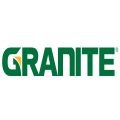
Granite Construction Incorporated

Fluor Corporation

Jacobs Engineering Group Incorporated

Dragados USA Incorporated
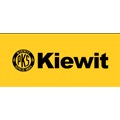
Kiewit Corporation

AECOM Corporation

Turner Construction Company

Skanska USA Construction Company
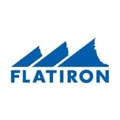
Flatiron Construction Corporation

McCarthy Building Companies Incorporated

The Lane Construction Corporation

Gilbane Building Company

Tutor Perini Corporation

PCL Construction Enterprises Incorporated

Sundt Construction Incorporated
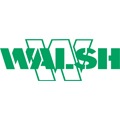
Walsh Group Construction Company

Balfour Beatty US Construction Company
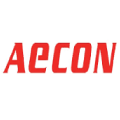
Aecon Group Incorporated

Pomerleau Incorporated

Graham Construction Company
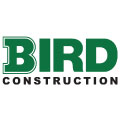
Bird Construction Company

EllisDon Corporation

Stuart Olson Campany

Hensel Phelps Construction Company
